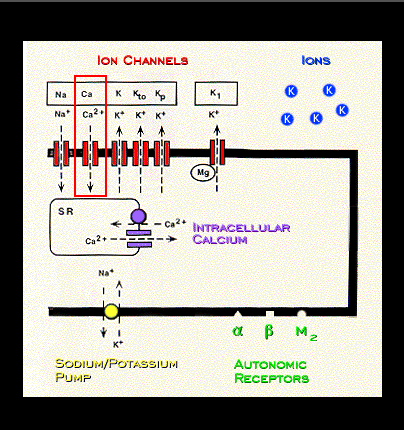
The class IV antiarrhythmic drugs are the calcium channel blocking agents and include verapamil and diltiazem. They bind to the calcium channel in a use dependent fashion and, like the beta-adrenergic blocking agents, slow sinus rate and slow AV nodal conduction. This similarity to the beta blockers is to be expected since beta-adrenergic stimulation is mediated via an increase in calcium conductance through the L type calcium channel.
